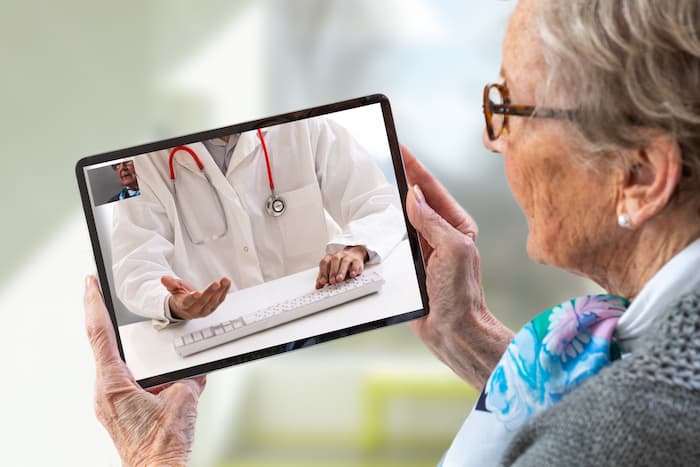Addressing health equity concerns is perhaps our biggest responsibility in modern healthcare. Countless efforts within the industry are making impactful strides in providing greater access to comprehensive care. While much has been done, much more is required. To help solve for this dire situation, we need to examine the direst setting.
It’s painfully clear that many patients who arrive in a hospital’s emergency department don’t need to be there. A large portion haven’t seen a primary care provider in years, and they feel their only guaranteed resource is the ED. It’s well-noted the effect this is having on staff and waiting times. While we can’t solve for all populations who repeatedly end up in the ER waiting room, we can utilize technology to help stem the tide, particularly with one of the most vulnerable groups.
Like many providers, skilled nursing facilities are feeling the strain of staffing shortages and high turnover. Dwindling numbers are making it harder for medical directors and their staff to care for the elderly and their unique needs. For new and/or inexperienced nurses, sometimes an ambulance call can be a catch-all: “This resident is in distress, I’m not quite sure of the best care option, let’s call the ambulance and take them to the hospital, just to be safe,” a staffer might think. It’s a logical response, but is it truly necessary? Let technology be the judge.
Since the pandemic began, telehealth has evolved into widespread adaptation in numerous sectors. It’s unfair to define it singularly because it has advanced far beyond waiting for a doctor’s input on a phone call. In skilled nursing facilities, it should be viewed as a true extension of the on-site staff and a critical filter that potentially emergent situations should be passed through.
Given the aforementioned landscape in these facilities, technological solutions need to be seamless and easy to use for staff. If they’re dealing with a potentially emergent situation with a patient, nurses can’t be searching for a log-in or password for a software system and be at the mercy of networks or outdated resources. A virtual care consultation needs to be easily accessible through a simple phone call that incorporates video so the responding physician can get a visual idea of what the patient is experiencing. Then, if a trip to the emergency room is required, that physician and staff can help streamline the transfer of information to the hospital so the ED staff can seamlessly pickup efforts in the care coordination journey.
River Garden, a skilled nursing facility in Jacksonville, Florida, implemented this solution and monitored potentially critical situations over a three-month period. The findings were profound: there was a dramatic reduction in trips to the emergency department as most of the instances could be treated through a simple consultation and perhaps a change in medication.
The impact of skilled nursing facilities adopting comprehensive and efficient virtual care solutions can be far-reaching. Those efforts can ease the burden on staff and empower\ them with an additional, real-time resource. It can also help reduce potentially traumatic ambulance and hospital visits for the patient. That means less-crowded emergency rooms and patient workloads for ED staff. Plus, lower readmission rates for hospitals connected with ACOs like skilled nursing facilities helps ensure higher rating scores.
Obviously, there’s no definitive solution that will solve every health equity issue we’re facing in our communities. However, incremental and proven measures that reduce seemingly small barriers like those in skilled nursing facilities need to be celebrated and considered when addressing larger issues. At the end of the day, whether it’s treating a five-year-old or an 85-year-old, the same “pieces” of accessibility are broken and virtual solutions are a valuable resource in helping put them back together. Technology is an enabler, not a burden, and skilled nursing facilities have perhaps taken a critical step towards proving that.

Brent Girardeau
Brent Girardeau is the Director of Technology at Telescope Health, which is a physician-led, healthcare solutions company focused on reducing barriers to care through innovation, human connection, and technology. Brent’s career in the healthcare industry spans more than two decades and includes experience with major health systems and consulting groups. In his role with Telescope Health, Brent is at the forefront of innovative technology that’s addressing health equity concerns in the community and with providers at large. Telescope Health was recognized by Amazon Web Services in 2022 for their efforts in providing effective healthcare solutions through technology.







